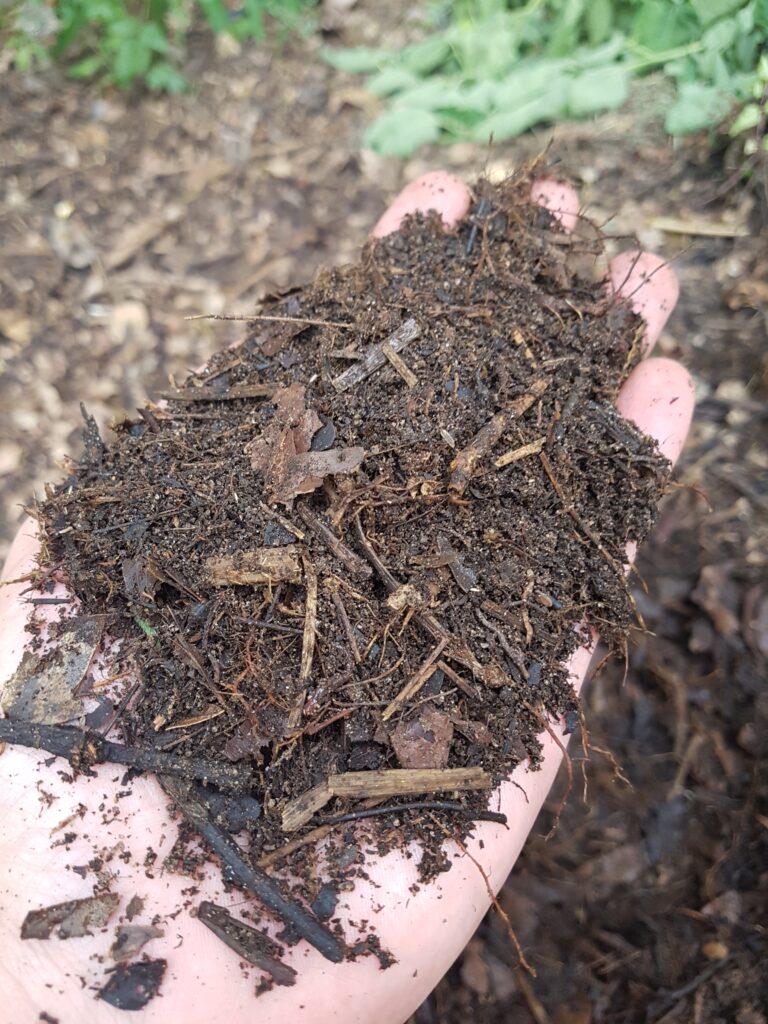Have you ever walked through nature or a forest and admired the splendor and diversity of plants just thriving all together with no pest or diseases visible. Why do you think that is? Have you ever seen any exposed soil in nature that is not covered by either organic matter such as fallen leaves or covered by low growing plants? This is where we as humans have failed nature, we are constantly trying to clean up, trim and tidy but this is not the way nature intended. Soil is a very complex structure and almost seen as a living entity itself. Soil is a biome filled with billions of micro organisms. This complex structure has been degraded by humans for hundreds of years and this is evident when you compare newly planted agricultural fields (referred to as Virgin soil) with fields that have been cultivated for many years. Despite the obvious depletion of nutrients, the constant exposure of the soil to the elements and the overuse of chemical fertilizers and pesticides have also eradicated much of the living biome in the soil. For instance, how often will you find an earthworm in a cultivated field? The function of these micro organisms is to maintain soil structure, introduce oxygen into the soil, break down organic material into usable substances for plants and the create resource competition for pathogens that cause plant disease. So a healthy garden should in many ways mimic what happens in nature, Trees have roots that penetrate deep into the earth and soak up minerals and trace elements that are usually depleted in the top layers of soil, these nutrients are then stored in the leaves and eventually drop to the forest floor. This is where the army of organisms starts their work, from small insects to fungi and bacteria. They incorporate these nutrients into different layers of the soil where it is further processed into various food sources for both organisms and plants. In a way they also unlock minerals in the soil which would otherwise be insoluble and unusable to the plants. It is only recently that we have started to understand the complex relationships between these organisms and plants. One specific type of bacteria from the Rhizobia family has created a symbiotic (dual relationship where both parties benefit) relationship with certain plants where they attach themselves to the roots of these plants and convert atmospheric Nitrogen which is inert and cannot be used by plants as is, into a form of nitrogen that ensures easy uptake and utilization by the plant, in exchange for this the plant provides the bacteria with glucose which the bacteria uses as food and cannot synthesize on their own. This is just one example of countless interactions between different organisms some of which we have yet to discover. So how does this relate to your garden? Our traditional ways of gardening interrupts this natural cycle, for instance some beneficial fungi grow filaments (long tentacle or root like structures) out into the soil as far as 8 meters. This can take them more than a year to accomplish and these filaments are not always visible to the eye. So here we come with our forks and break up the soil but we are also breaking up these filaments and hundreds of complex communities that we barely understand. We also remove all dead plant materials such as leaves (those rich mineral stores), small weeds, small twigs and yellowing leaves on plants and send it all to the landfill or burn it, thereby exposing the soil to wind, erosion, sunlight and temperature fluctuations and at the same time removing the food source of the soil biome and ultimately the plants. A few months down the line we start having problems; our plants lose their vigor so we add some fertilizer. Wow, they grow a lot better but now my roses have aphids! Not to worry, we will spray them with a pesticide. Unfortunately, now the soil dries out so quick because its hot outside and the soil bakes up to 35°C in summer causing significant evaporation and the elevated temperature kills off the remaining organisms (they are used to temperatures of around 20°C) that managed to survive the constant turning of the soil, the fertilizers, the hunger and the pesticides. Then we wonder what have we done wrong? Or we say that we don’t have green fingers. Thankfully, soil structures can be repaired and we can all make changes to stop this from happening. Despite all the benefits to your garden, these are all carbon based life forms and the leaves and dead plant material that is worked back into the soil also store carbon in the soil which will contribute to reducing our overall carbon dioxide in the atmosphere. Start with the basics: • Stop sending your garden waste to the landfill and start a compost heap. • Do not till and turn compost into the soil, simply put in on top of the soil as mulch and the organisms will do the rest. • Stop using pesticides, start planting a diverse range of plants in your garden to attract beneficial insects and birds that will do most of the pest control for you e.g. Ladybugs eat aphids and birds eat caterpillars. • Keeping your soil cool and healthy will prevent many plant diseases because the plants will not be subjected to stress. In humans, chronic stress leads to disease such as heart disease and high blood pressure, the same applies to plants, just a different disease. • Support initiatives that compost garden wastes into commercially available compost. These types of compost are the best as they are made with different materials and not only bark. (I will still write on Mono culture and its drawbacks)

